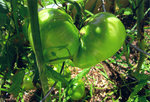 Narrowsburg
NarrowsburgLight Rain Fog/Mist, 43°
Wind: 8.1 mph
 Narrowsburg
Narrowsburg


REGIONAL — Planning your first garden this year? So are a lot of other people. And seeds are in high demand.
As lockdowns hit and people stayed home, Burpee had to pause new orders to allow staff to catch up. The surge in orders was “just unbelievable,” Burpee’s chairman, George Ball, told CBS News.
Johnny’s Selected Seeds had to limit the days they could accept home gardeners' orders due to an extremely high volume of orders (mid-January into the beginning of March) in order to process seed orders from commercial growers. They made significant gains in their operations center, and are now accepting orders from home gardeners 24-7.
You can find seeds elsewhere, of course—absolutely check your local farm and garden store—but this shows the increased interest in gardening.
Cornell Cooperative Extension had “so many calls in 2020” about starting a garden, said Brenda Miller, environment and natural resources program manager at the Sullivan County office.
She and her colleagues at Cornell, as well as those at Penn State Cooperative Extension, are the place to start if you want to launch a garden.
“You just have to open the door” to learning more, Miller said. “You really do have to have an attitude of ‘I don’t know anything,’ and take it from season to season.”
In other words, let your garden be the teacher.
These days, people automatically turn to the internet to start learning, but gardens are highly individual. Soils are different. Weather is different. Our yards don’t get the same amount of sun.
To start, look at your land, she says. “What’s your land size?” And within that, “What can I manage? Start slow.”
In fact, sit down with pen and paper and make a plan.
“First thing, ask what it is you want to grow,” Miller said. “What do you want to get out of your garden?”
Then, get to know your soil. Dig a 12-by-12-inch hole, fill it with water, let it drain naturally and do it again. Ideally, you want it to take two to three hours to empty again. Adding compost often helps if your soil drains poorly, but consult your cooperative extension or garden store if you have a bigger problem.
Test your soil. Is it acid or alkaline? You’ll need to dig in amendments to get the soil in balance.
Look at your sun exposure. Where does shade fall, and how long is it there?
After that, Miller said, look at your environment. “You’ll need some sort of fence. Are there deer? Groundhogs? You might have to sink a barrier into the ground” to keep burrowing animals out.
Then find out when frost first sets in, and when the last frost goes away.
And finally, you can think about what you want to grow. “I would start with easy-to-grow plants,” Miller said. You can buy plants ready-started at cooperative extensions or garden stores. (Shop locally. Big box stores have lots to offer, but they can’t buy for local soils, and they don’t necessarily know what the ground is like here.)
Find out what diseases plants can get here and start with resistant varieties, Miller said.
Before you plant your plants, till your soil up. However, “I don’t recommend rototilling every year. It breaks down soil structure.” And don’t take the easy way out and just cover your land with plastic to kill the weeds. Plastic will keep snow away, and that white stuff adds nitrogen. It also keeps the rain off, and you “want the nutrients to flow.”
So till first, put your fence up, then plan where your beds will go. “A detailed plan helps you get through whatever nature throws at you.” How much space do you have? If you want pumpkins, allow a lot of room. Climbing plants will obligingly climb and leave ground for something else.
Seed catalogs or the person who sold you your plants or seeds can tell you when you should plant and when to expect to harvest. You can harvest and plant again, even if it’s just a cover crop to add nitrogen. “You don’t want beds to be bare... you can cover with straw” if nothing’s growing.
Miller has a lifetime’s experience in gardening. She says that the wonder of it is that, “It’s an education and an evolutionary process.” And as you learn more, you deepen your relationship with the land. “It’ll change, it’ll never be the same.” And neither will you.
[UPDATE: This article was updated on March 25 to reflect the changing availability of seeds from national companies to home garden growers.]
Comments
No comments on this item Please log in to comment by clicking here